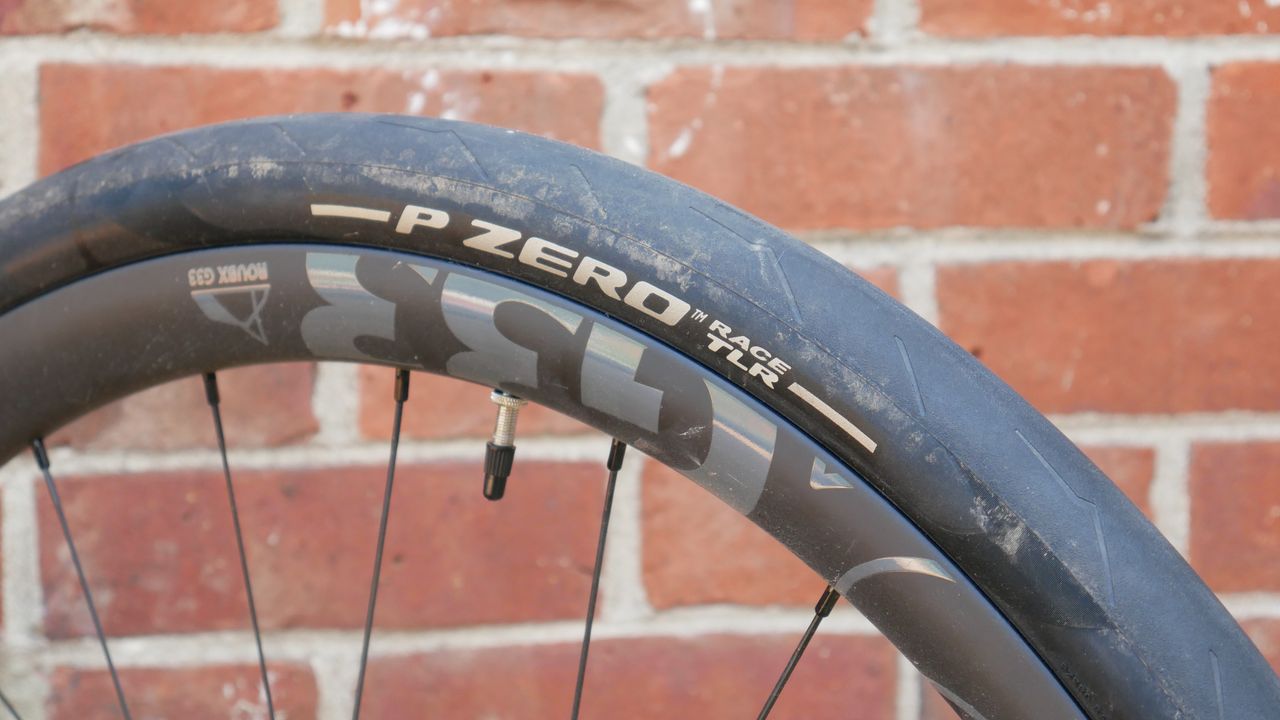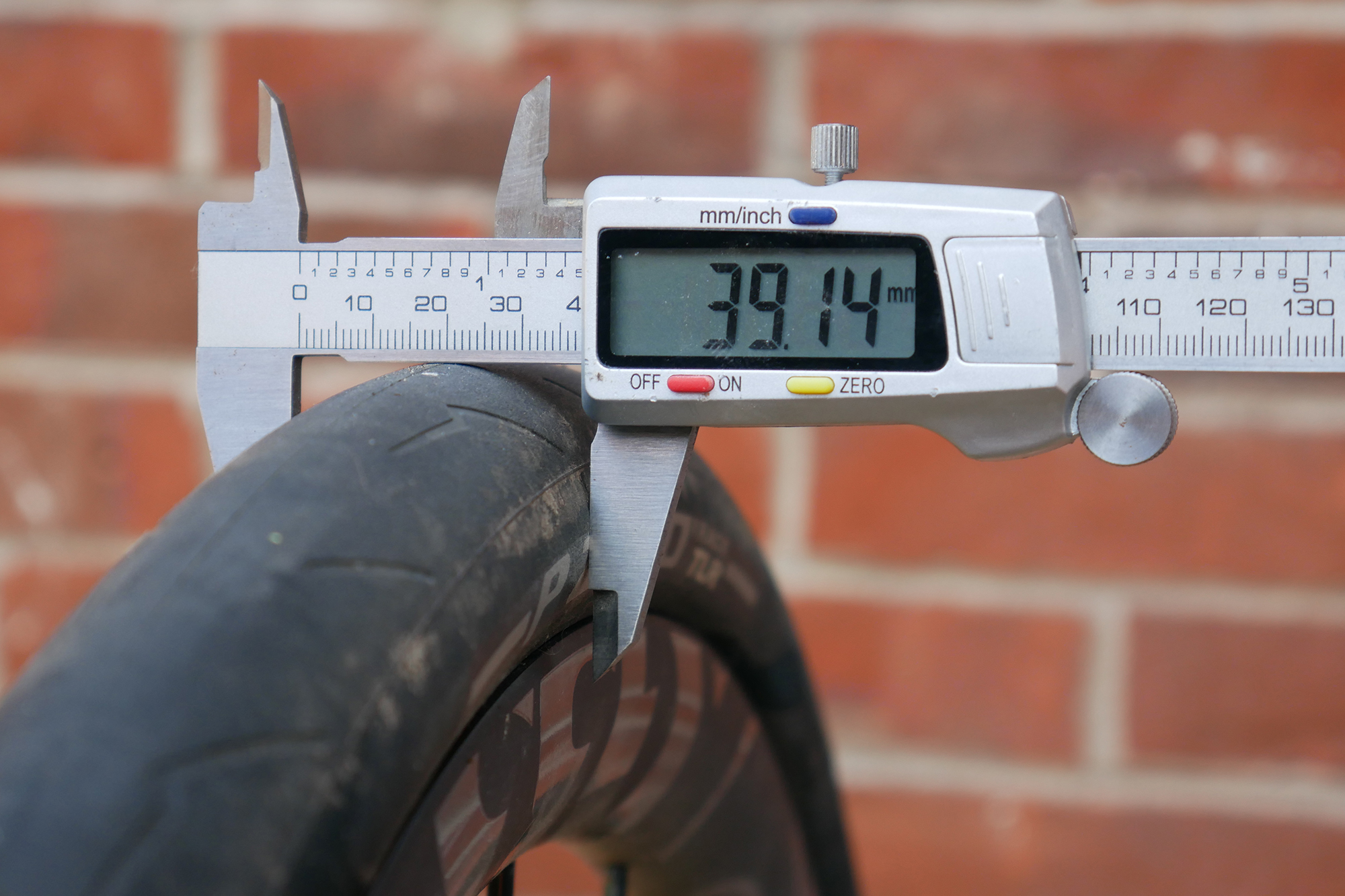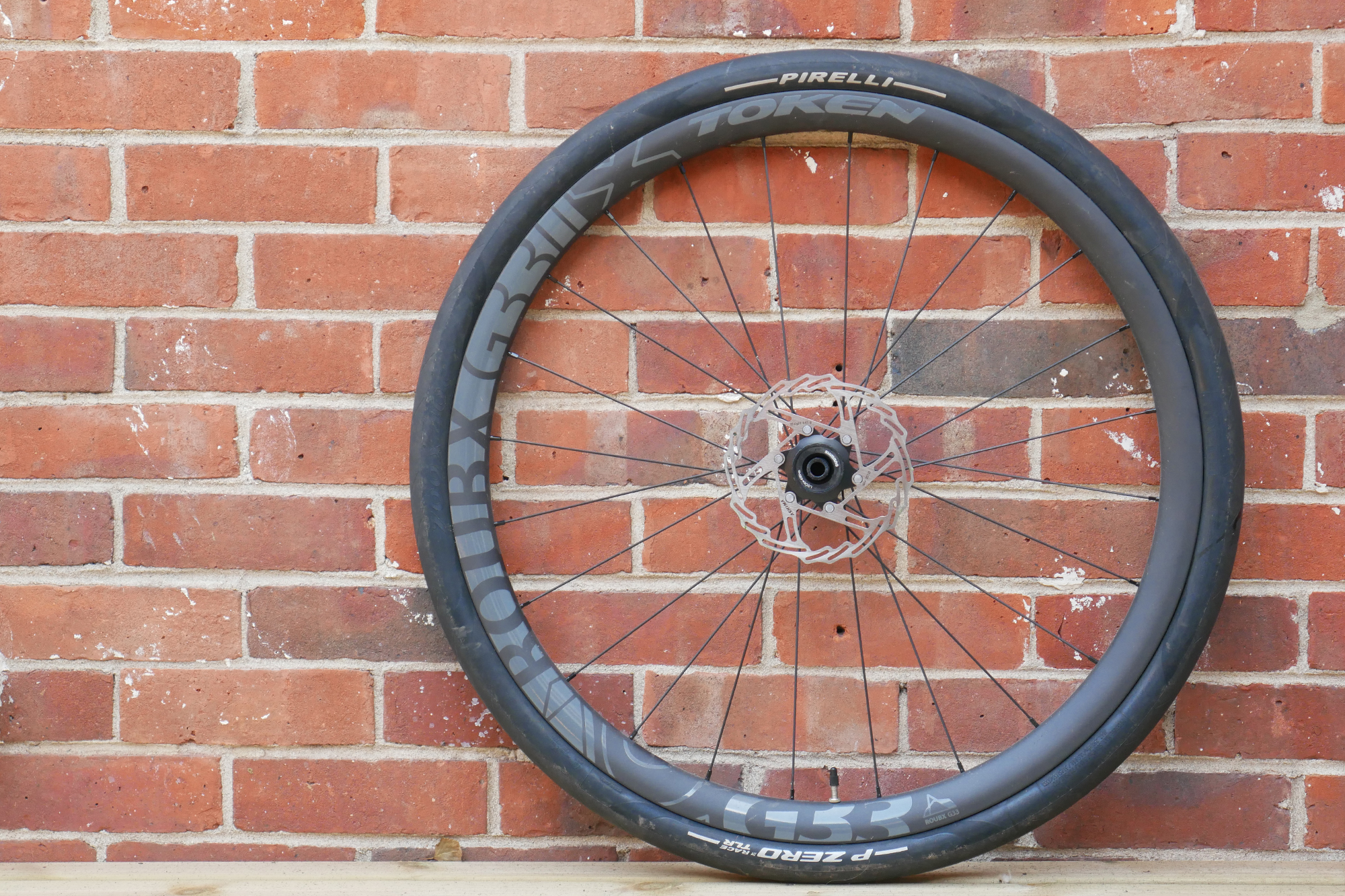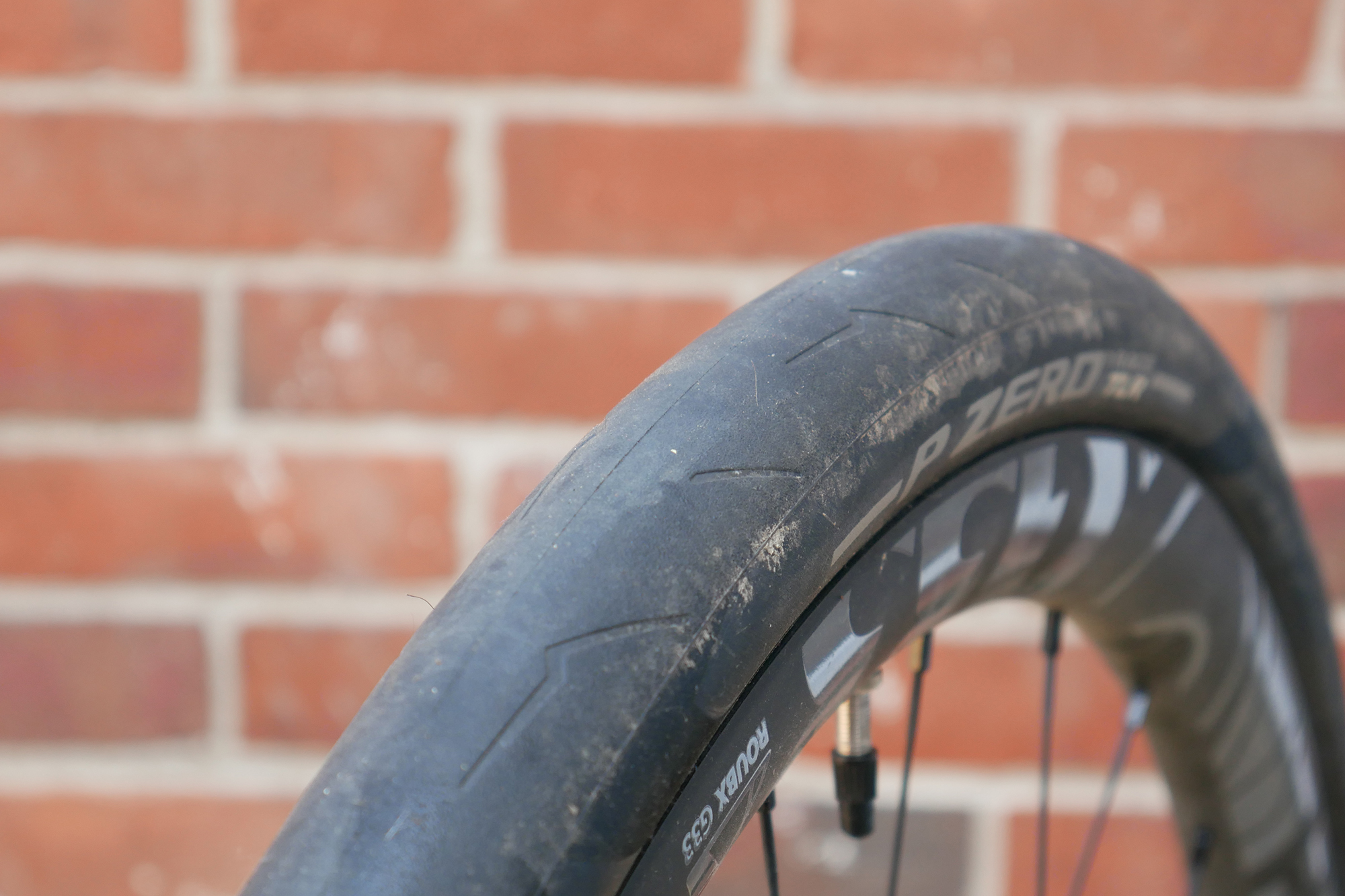
In recent years, I have become somewhat immune to brands touting their best gravel bike tyres as the best ‘all-round’, ‘do-it-all’ and ‘go-anywhere’ options. Don’t get me wrong, there are a select few that do work well, but they are nearly always left or right of centre. Dig into the data, even just a little. You will quickly discover that the weight and rolling resistance figures of these ‘do-it-all’ tyres are not significantly outperforming much wider cross-country MTB tyres, and it makes you wonder if we could be learning something from them?
Do we need a slightly different approach to gravel tyres? I certainly thought so, which is why I was very excited to put the Pirelli P-Zero Race TLR 40mm to the test.
Officially launched back in late 2024, the Pirellis are only now widely available. Light, supple, sticky rubber with a single focus, being fast on hard-packed and surfaced roads and tracks. Could this be the tyre to change the game?
Construction
Pirelli makes no claims about this being a gravel tyre at all; it is even listed on the same page of the Pirelli website as the more road-going sizes. They utilise the same SpeedCORE tubeless-ready casing construction, derived from their motorsport expertise and finished in Pirelli’s SmartEVO compound rubber. A compound which has become well-known for its fast-rolling nature and durability, as Andy Turner found out when he reviewed the P-Zero Race 28mm versions back in 2023.

At 464g/16.3oz on my scales, the P-Zero’s saved me some serious grams compared to the 47mm Specialized Pathfinder Pro’s coming off the bike, which weigh in at 600 grams. Total savings are exactly 270g/9.7oz. While this is not light by road bike or even by ‘fast-gravel’ tyre standards, with the likes of the Schwalbe G-One RS Pro just over 20g/0.7oz lighter, their rolling resistance figures and puncture protection are what draw you in. According to bicyclerollingresistance.com, I should save ten watts over the Specialized tyres but have nearly double the puncture protection of the Schwalbe G-One. A win-win, it would seem.
Once I had them mounted, more on that in a minute, they inflated to 39mm at 40 psi, on a 25mm internal, hookless rim from Token. Which is a just over 1% difference from the advertised size; I'll forgive Pirelli for that.
Fitting and inflation
Tyres fit differently depending on the internal rim width, whether they are hooked or hookless, and the depth of the rim bed. Given that both 25mm internal rims and hookless are the norm for gravel and increasingly wide road setups, the P-Zeros are one of the hardest tyres I have ever had to fit. I had at least half a dozen attempts and a good couple of hours of wrestling.

Two of the chunkiest tyre levers I own finally got them over the line (credit to Muc-Off Rim Stixs; hands down the best tyre lever out there), and sheer brute force.
This incredible tight fit meant that there were little to no arguments when it came to inflation, as they popped up almost instantly with a track pump and sealed straight away - a silver lining, despite my red, raw hands.
"Two of the chunkiest tyre levers I own finally got them over the line (credit to Muc-Off Rim Stixs)"
The Ride
With my starting point set at 40psi, I was immediately impressed with the P-Zeros. They felt fast, and this was supported by a string of PBs, mostly on paved sections, which buoyed my mood after the fitting fiasco. Once I got off the cycle paths and onto country lanes, it was immediately apparent that 40psi was the upper limit of the tyre. The extra protection in the casing means it is not the most compliant, and the only way to combat this is to lower the pressures. This didn't bother me, as I knew it would benefit me when I ventured off-road, and it had no detrimental effects on efficiency.
After testing through a reasonably mild and dry UK winter, I found that I settled at 34 psi, with no need to adjust front to back and with zero punctures or air loss issues to report.
Headed into the spring, I ventured out to find some more challenging terrain for the P-Zeros to tackle. Why did I wait? Well, while I'd love for them to work all year round, I think a slick tyre on wet South Downs chalk is probably asking a little too much. However, again, the P-Zero surprised me, particularly on the hard-packed gravel of the ‘old coach road’ where semi-slicks can feel no faster than a knobbled tyre. They consistently felt fast regardless of the surface, which is precisely what I'd hoped for.

Gravel bikes with their longer top tubes, slacker head angle and larger offset forks just aren’t going to handle like the best road bikes, no matter how good the tyre is that you fit. Indeed, my Sonder Camino Al, equipped with Pirelli’s, was not inspiring confidence when leaning into a corner. While they never slipped or lost traction, even in wet conditions, a combination of the low pressures required, gravel bike geometry and the shape of the tyre meant I was rarely quicker than I was with a semi-slick tyre, which essentially has the same issues on the road.
While I wouldn't expect them to perform well in the corners off-road, given the lack of tread, they quickly highlighted the limits of gravel bike geometry when it comes to the blacktop. While that's not all the P-Zero’s fault, it kind of puts a damper on what I think a lot of people would hope this tyre could achieve.
Conclusions
Of course, Pirelli never intended for this tyre to be a gravel tyre, so one could argue that the Pirelli performed exceptionally well. Providing decent performance on hard-packed gravel and more straightforward bike paths and roads. However, I believe it's road prowess, or slight lack thereof, which is likely the characteristic people will be hoping for when they buy this P-Zero, wasn’t remarkable enough to justify switching away from a semi-slick.
Overall, what the Pirelli has taught me is that there is still work to be done when it comes to slicker gravel tyres and the pursuit of the best ‘do-it-all’ tyre. However, there are a select few semi-slick gravel tyres that are very good, performing above and beyond what I’ve experienced in this test. Tyres like my Specialized Pathfinder Pros, which will be going back on my bike now that I am done testing.







